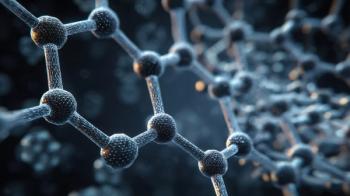
Discovering the Hidden Plastic in Garden Compost with Pyr-GC–MS
An Australian study used pyrolysis coupled to gas chromatography-mass spectrometry (Pyr-GC–MS) to analyze the presence of plastic polymers in commercial and homemade composts. LCGC International spoke to Simran Kaur—a PhD candidate at the Queensland Alliance for Environmental Health Sciences (QAEHS) at The University of Queensland in Woolloongabba, Australia—to find out more about her team’s findings.
Compost and potting mixes are emerging sources of both conventional and biodegradable plastic residues in soil. Although biodegradable plastics are designed to degrade, they require specific conditions that are not always met in typical composting environments. An Australian study used pyrolysis coupled to gas chromatography mass spectrometry (Pyr-GC–MS) to analyze the presence of plastic polymers in commercial and homemade composts. The results highlight compost as an overlooked source of plastic pollution and emphasize the need for cleaner composting practices. Additionally, concerns were raised about the potential uptake of plastic particles by plants, which could affect plant health and food safety, indicating a need for further research in this area.LCGC international spoke to Simran Kaur,—a PhD candidate at the Queensland Alliance for Environmental Health Sciences (QAEHS) at The University of Queensland in Woolloongabba, Australia—to find out more about her team’s findings.
Your paper (1) outlines your research group’s using pyrolysis coupled to gas chromatography mass spectrometry (Pyr-GC-MS) to investigate the prevalence of selected plastic polymers in commercial potting mix/composts and homemade composts in Australia. What inspired this research?
We were inspired by increasing concerns around plastics contamination in terrestrial environments, particularly in gardens and agriculture. While a lot of attention has been paid to plastics in oceans and rivers, less is known about what’s in our home garden soil. Compost and potting mix are often seen as “clean,” so the idea that they might be unintentionally introducing plastics into soil and even into home gardens was worth investigating.
Traditionally, what techniques were used to detect polymers?
Commonly used methods include Fourier transform infrared (FT-IR) spectroscopy, Raman spectroscopy, and Pyr-GC–MS. We used Pyr-GC–MS to detect plastic and biodegradable plastic polymers. This technique is great for identifying microplastics based on mass and chemical fingerprinting, but they do have limitation, especially when dealing with highly complex samples such as compost.
What benefits does Pyr-GC–MS offer over previous techniques for this application?
Pyr-GC-MS is particularly useful because it thermally breaks down polymers into unique marker compounds, which can be separated and identified even in highly heterogeneous samples such as compost. Unlike FTIR or Raman, it doesn’t require pre-sorting or visual identification of particles. It also enables the detection of both micro- and nanoplastics, even if they're embedded in organic matter.
What were your main findings?
We detected a wide range of conventional plastic polymers, such as polypropylene (PP), polystyrene (PS), polymethyl methacrylate (PMMA) and polycarbonate (PC), as well as three bio-based polymers—polylactic acid (PLA), polybutylene succinate (PBS), and polyhydroxyalkonaotes (PHA)—and one fossil-based biodegradable polymer, polycaprolactone (PCL), across both commercial and homemade composts. One surprising finding was that homemade composts weren’t necessarily “cleaner” than commercial ones. In some cases, they contained comparable or even higher levels of plastic, likely due to contamination from food packaging or synthetic textiles in household waste.
What were the main challenges you encountered from an analytical perspective, and how did you overcome them?
One of the biggest analytical challenges was the high organic content of compost, which can interfere with pyrolysis and mask polymer-specific signals. Natural organic matter and other substances in the matrix can produce the same pyrolysis products as certain plastics, leading to potential false positives. To address this, we compared the ratios of characteristic pyrolysis products for each polymer. When these ratios fell within an expected and acceptable range, we considered the identification reliable. However, in some cases, particularly for polymers such as polyethylene (PE) and polyvinyl chloride (PVC), the product ratios were inconsistent, abnormally low, or highly variable. This suggested the presence of interfering compounds from the compost matrix. As a result, due to the likelihood of false positives, we chose not to report PE and PVC in these samples.
Were there any specific polymers that were easier to detect, or, conversely, harder to detect?
Some polymers, such as PP, polyethylene terephthalate (PET), PMMA, PC, PLA, PBS, and PHA were confidently detected and reported based on distinct pyrolysis products. In contrast, PE and PVC could not be confidently identified due to overlapping peaks and suspected matrix interference and therefore were not reported. A few polymers, including PS, PCL, and polybutylene adipate terephthalate (PBAT) were detected at levels below the method detection limits (MDLs) in several samples, limiting confident quantification.
How did you process the data to obtain the results you were looking for?
We ran standards of pure polymers to generate calibration curves, which were then used to calculate the mass of each plastic in the compost samples based on specific pyrolysis breakdown products. This approach allowed us to obtain plastic content across different samples.
Were there any limitations to this research that are important to note?
One major limitation is that Pyr-GC–MS provides information about the presence and relative abundance of polymers, but not particle size or morphology. So, we can't directly quantify microplastic particle counts.
Moving forward, are you considering and implementing any improvements to the method?
We’re exploring modified cleanup and extraction methods to improve detection limits.
Are there any next steps in this research?
We’d like to expand the study to include a wider range of compost and potting mix products from across Australia to better understand the national scope of plastic contamination. It would also be valuable to investigate a broader spectrum of plastic types, including lesser-studied biodegradable and additive-rich polymers.
Reference
1. Kaur, S.; Okoffo, E. D.; Thomas, K. V.; Rauert, C. Unearthing the Hidden Plastic in Garden Compost. Sci. Total. Environ. 2025,973, 179153. DOI:
Newsletter
Join the global community of analytical scientists who trust LCGC for insights on the latest techniques, trends, and expert solutions in chromatography.




